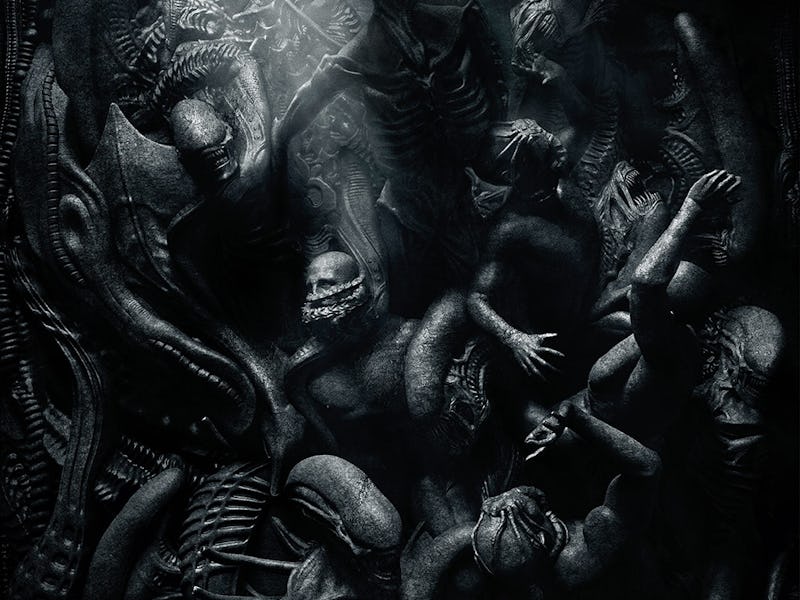'Alien: Covenant' Went Old School Using Latex Aliens on Set
Creature supervisor Conor O'Sullivan was thrust into the job of making xenomorphs for Ridley Scott's latest scream.

Five years after Prometheus, Ridley Scott has returned to his terrifying world of xenomorphs and derelict ships in Alien: Covenant. Although filmmaking technology in 2017 is sophisticated enough to de-age Kurt Russell for Guardians of the Galaxy and resurrect Peter Cushing for Rogue One, the old school director insists on shooting movies as real as possible, leading to a lot of aliens being shot on camera in Alien: Covenant.
OK, so they’re not real aliens, but they felt like it on set. The xenomorphs were physical puppets made by creature supervisor Conor O’Sullivan. Although the two-time Oscar-nominated artist’s work has chiefly focused on makeup and prosthetics, for epics like Game of Thrones, X-Men: First Class, and more (including the Joker’s makeup in The Dark Knight), O’Sullivan wound up overseeing the creature design for Alien: Covenant just three months before filming. “When I came onto the film, I was only doing the makeup,” O’Sullivan tells Inverse. “I was told by the studio that everything had been designed, and there was never going to be any men in suits.”
And then, well, that turned out to not be the case.
“I presume someone at Fox asked, ‘Is it designed? Have you have a design for the creature?’” he recalls. “Somebody told the producers it was. But, when I got there, that wasn’t the case, and it wasn’t what Ridley wanted.”
The doomed crew of the Covenant in 'Alien: Covenant.'
Luckily, O’Sullivan had worked with Scott before, on Prometheus. Though he just did makeup on that one, he had an idea of what the filmmaker was after.
“Ridley wants to shoot things for real, even if they’ll be replaced. He believes, and I agree with him, that it looks better in the end if you’ve got a real reference for the CG guys to copy,” he says. At the end of shooting, O’Sullivan and Scott handed over all the 3D files to the visual effects department, who essentially worked over the real effects caught on camera. “What you see, pretty much, [is] essentially what we designed.”
In the final cut of Alien: Covenant, two physical aliens can be seen: a puppeteered version and one in a suit, portrayed by Goran D. Kleut. Its materials were a concoction of materials that included latex, foam, fiberglass, metal, and silicons. “You always use silicons so you can get that sort of translucency,” O’Sullivan explains. “Ridley loves the translucency. But it makes it heavy, as opposed to latex. But you have to paint transparency into it. So you have to use a combination of things to get it right.”
In space, still, no one can hear you scream — from 'Alien: Covenant' (2017).
Crafting the aliens in Alien: Covenant wasn’t a huge departure from the work done for the original 1979 classic. “Foam latex was around then. It’s quite tricky to use. When you look at the making of the original suit, from my point of view, I see cracks and things that are wrong with the foam. But we use foam latex; in the same way, we just combine it with silicon.”
A perfectionist of the same class as James Cameron and David Fincher, when Scott has a vision, he does whatever it takes to get it made. O’Sullivan illustrates this point by explaining how Scott departed from the original, haunting xenomorph sketches from H.R. Giger. “If you look at the original Giger, it’s much more organic than the classic alien,” he says. “Ridley was interested in a wax figure in the Spinoza museum. I think this is what he wanted, not the biomechanical look. I’ve got a drawing he’s drawn over with reference to the wax work. Ridley wanted a naturalized version, and that’s what we did. Ultimately, the designer was Ridley himself.”
Alien: Covenant is in theaters now.